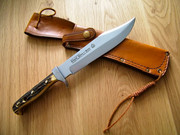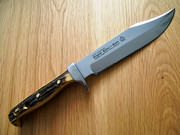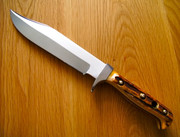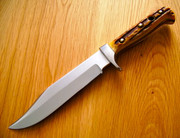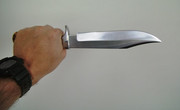Hello,
I am new to the knife world and am looking to buy an excellent hunting knife, mainly for skinning, but would be nice if it has other uses.
I am looking at a 2011 Puma White Hunter. Also I am looking at several vintage Puma hunting knives made in the 60's, 70's and 80's.
I read in this forum that Puma Knives made after the mid 90's are not made with the best quality as they used to make. The link is at the bottom about that discussion.
Please let me know the advantages and disadvantages of owning a 2011 Puma and a Puma Vintage Knife.
Please help, I am in need of a knife and need your views. Also please let me know other knives companies that make excellent hunting knives which are on the same level or better than Puma.
http://www.bladeforums.com/forums/sh...of-puma-knives
I am new to the knife world and am looking to buy an excellent hunting knife, mainly for skinning, but would be nice if it has other uses.
I am looking at a 2011 Puma White Hunter. Also I am looking at several vintage Puma hunting knives made in the 60's, 70's and 80's.
I read in this forum that Puma Knives made after the mid 90's are not made with the best quality as they used to make. The link is at the bottom about that discussion.
Please let me know the advantages and disadvantages of owning a 2011 Puma and a Puma Vintage Knife.
Please help, I am in need of a knife and need your views. Also please let me know other knives companies that make excellent hunting knives which are on the same level or better than Puma.
http://www.bladeforums.com/forums/sh...of-puma-knives




